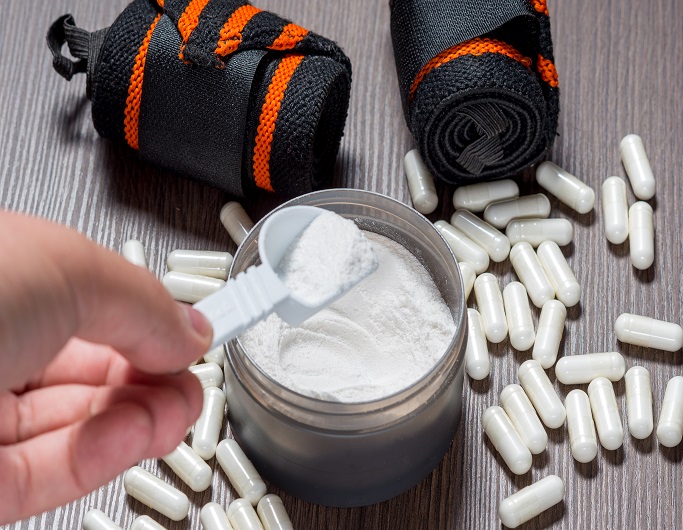
Alternatives To Counting Calories For Weight Loss
Let me first start by saying when ever I mention counting calories I refer to counting calories along with macronutrients. Gaining weight is a matter of consuming excess calories while losing weight is a matter of consuming less calories than you are burning.
So what are macronutrients?
 Macronutrients or macros are nutrients that provide calories. These are the nutrients that are needed for our body to function. There are three macronutrients, carbohydrate, protein and fat and whilst each of these macronutrients provides calories, the amount of calories that each one provides varies. Carbs and protein provide 4 cal/gram while fat provides 9 cal/gram. This means that if you looked at the nutrition facts label on a product and it said 20 grams of carbs, 1 grams of fat, and 5 grams of protein per serving, you would know that this food has 109 calories per serving.
Macronutrients or macros are nutrients that provide calories. These are the nutrients that are needed for our body to function. There are three macronutrients, carbohydrate, protein and fat and whilst each of these macronutrients provides calories, the amount of calories that each one provides varies. Carbs and protein provide 4 cal/gram while fat provides 9 cal/gram. This means that if you looked at the nutrition facts label on a product and it said 20 grams of carbs, 1 grams of fat, and 5 grams of protein per serving, you would know that this food has 109 calories per serving.
I choose to count my macronutrients (pro, carbs, fats) but for some this can be hard, boring and frustrating. Managing macros is essential to maintain, lose or gain weight, but counting them is not always necessary. Nor does calorie counting help us balance our goals with our natural enjoyment of food. In a lot of cases people have lost weight without counting.
How do you know if counting calories and macros is for you? Give it ago and see how you cope. Someone completely new to health and fitness does not need to, and should not start counting calories from the start, they just need to make small changes to their current routine and lifestyle to make progress, to lose weight. Here are some approaches to use to help you control your calories without counting calories
1. Eat more veggies
Vegetables contain fibre resulting in them being filling. It has been shown in research that added veg, to a calorie deficient diet, correlated with improved weight and fat loss. (1) Add to that all the micronutrients they contain for the very few calories and veggies are one of the most important sources of calories. Try and make sure that half of your plate is covered with colourful veggies and you should reduce the number of calories you eat .
2. Eat more lean protein
Again, simple and obvious but extremely effective. Protein has a powerful satiating effect, along with a high thermic effect, the amount of calories required by the body to break down a given a food. Eating more protein and vegetables can help you control your calories, as this has been shown to lead to restricting calories due to the satiety caused by increased protein and fibre from veg. (2) Protein also stimulates protein synthesis and creates an environment for the increase muscle mass. The more muscle you carry, the higher your metabolism and the better you look.
3. Portion control
For example your portion of protein could be equal to the palm of your hand. A portion of carbs will be equal to the size of your clenched fist, and a portion of fat will be equal to the tip of your thumb, and for nuts you can choose a handful. You can then control the number of portions of protein, carbs and fats you have a day dependent on you bodyweight. For example; 10 portions of protein, 4 portions of fat and 5 portions of carbs. This can then be altered depending on body assessments and progress. The method is great as no calculator is needed.
4. Eat slowly
It takes time for the body to register the fullness and after a while it signals satisfaction. If you eat slowly you stand more chance of consuming less calories.
5. Drink More Water
Drinking more water can make you fill fuller, leading to you consuming less calories. Also sometimes you can think you are hungry but you are really only thirst or bored. So drinking water can be the answer.
6. Following a Meal Plan
Following a step by step guide can be beneficial for some, but this will only work if the client has been taken into consideration when it was designed by the nutritionist. This means the clients preferences, lifestyle, tolerances, goals and knowledge were all tailored for. It is also important to have similar food and meals that can be swapped in and out depending on what the client wants to eat that day, as following the same plan day in day out is boring, not sustainable and not teaching the client anything about food choices and calories. You do not want to be following a meal plan for the whole of your life so education is key with this approach.
Other Approaches
Other approaches range from using smaller plates, removing carbs from 1 or 2 meals per day, keeping stress to a minimum and getting adequate sleep and hydration or removing cooking oils from your kitchen. These will all help control you calories. Are these ways optimal for fat loss, maintenance or muscle growth? No of course not as they are not as accurate, as actually counting macronutrients and hitting the numbers but counting calories isn’t for everyone!
Always look to adopt healthy habits first and foremost before macronutrient counting as it can be a big step for some, not saying its too big for everyone, but it can be hard when starting off and lead to problems, even OCD and eating disorders. Instead of trying to adopt a brand new routine and turn your life around all in one week, make a plan to implement small, new, sustainable lifestyle habits. For example drinking more water, getting out for a walk or workout once per week, or eating 2 pieces of fruits per day. Small steps that won’t disrupt your current routine too much will be easier to implement and stick with in the long run. Once the first step becomes a habit, start a second one.
So find what works best for YOU and always ask yourself, ‘can I see myself eating like this 2 months or a year down the line?’ if you can then great. If not then you need to find an eating routine which is sustainable and enjoyable for YOU! We do not want a diet that only lasts 10-12 weeks, we want enjoyable healthy lifestyle changes. Then once you are ready, try keeping a food diary for a week or two to work out your exact calories and macronutrient breakdown you have been consuming, and adjusting based on goals and progress with the help of a professional.
References
1. L D Whigham1, A R Valentine2, L K Johnson3, Z Zhang2, R L Atkinson4 and S A Tanumihardjo2 . Increased vegetable and fruit consumption during weight loss effort correlates with increased weight and fat loss. Citation: Nutrition and Diabetes (2012) 2, e48.
2. David S Weigle, Patricia A Breen, Colleen C Matthys, Holly S Callahan, Kaatje E Meeuws, Verna R Burden, and Jonathan Q Purnell. A high-protein diet induces sustained reductions in appetite, ad libitum caloric intake, and body weight despite compensatory changes in diurnal plasma leptin and ghrelin concentrations. Am J Clin Nutr July 2005 vol. 82 no. 1 41-48.






No Comments yet!